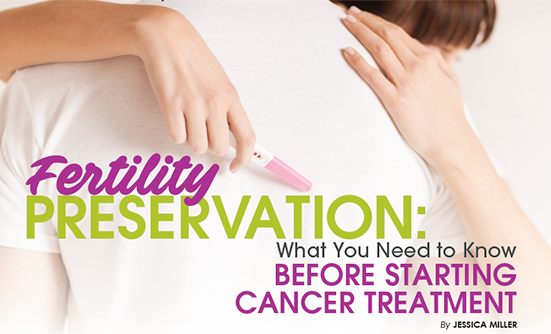
It’s sometimes difficult for patients to begin talking to a member of their oncology team about sex. At the Oncology Nursing Society (ONS) 44th Annual Congress, Lisa Chism, DNP, APRN, set out to address this issue by providing oncology nurses with enough information to bring up the subject with their female patients confidently and comfortably. Some of the information and advice she offered to the members of ONS is presented here.
Bringing It Up
Cancer therapies and treatments can alter a woman’s sexual health in a variety of ways. Most of these changes are due to therapies causing temporary or permanent symptoms of menopause, resulting in sexual issues such as decreased desire, vaginal dryness, and pain with intercourse.
Many patients don’t mention these concerns to their oncologists because they don’t want to seem ungrateful for the fact that their lives were saved by their doctors. But as Dr. Chism explained, “We saved your life for a reason.” And sexual health is a part of that life.
Dr. Chism presented several recommendations to help oncology nurses talk with patients about sex. To assess sexual health in patients, Dr. Chism suggested that oncology nurses start with specific questions, such as:
- “Are you having any sexual health concerns?”
- “Are you having any difficulty with arousal?”
- “Are you able to achieve orgasm?”
Dr. Chism also recommended that nurses use a technique known as the PLISSIT model when discussing sexual matters with their patients. The letters in the name stand for the 4 steps that an oncology nurse may follow:
- P = Permission—The oncology nurse may ask permission to discuss an aspect of the patient’s sexual health. She might say, for example, “May I ask you whether you have pain with intercourse?” Or, she might encourage the patient to bring up a topic, with a statement such as, “Many women experience sexual problems due to hormonal changes after menopause. Is there a topic you’d like to discuss?”
- LI = Limited Information—With her knowledge of the expected impact of the disease and its treatment options, an oncology nurse can provide brief, targeted information about topics that concern her patients
- SS = Specific Suggestions—If a specific problem has been identified, the patient may be offered solutions, such as ways to cope with treatment side effects, the use of vaginal moisturizers or lubricants, or acceptable alternative sex practices
- IT = Intensive Therapy—An oncology nurse may suggest a referral to a sexual specialist or counselor if seeing a specialist for support and guidance is appropriate.
For women, arousal often precedes desire. Patients may be encouraged to rethink sexual activity and to consider replacing spontaneity with anticipation. “Sometimes you have to get ready for sex, and that’s OK,” Dr. Chism said. But if arousal is a problem, and if orgasm is a problem, then desire will be a problem. It may be helpful to explore sensate focus techniques, which focus on intimacy and decrease the emphasis on performance and orgasm.
When Medication Is Necessary
If a patient has a persistent lack of desire over an extended period of time, along with marked distress, the patient may be diagnosed with hyposexual desire disorder (HSDD). Distress—experienced by either the patient or her partner—is the key here. HSDD may not improve with counseling alone, and if not, medication could be necessary.
Flibanserin is the first FDA-approved medication for HSDD. It has been shown to increase desire, improve the number of satisfying sexual events, and markedly reduce distress associated with low desire in both premenopausal and postmenopausal women. Although testosterone is not FDA-approved for the treatment of HSDD in women, it has demonstrated a similar effect in some women and is often used to treat this condition.
Bremelanotide was approved by the FDA in June 2019. It is an injection given under the skin and has been shown to significantly improve sexual function when taken 45 minutes before a planned sexual event. Its most common side effect is nausea.
Treating Vaginal Atrophy in Postmenopausal Women
Vaginal atrophy, which is the thinning, drying, and inflammation of the vaginal walls that may occur when the body produces less estrogen, is now part of a larger classification called genitourinary syndrome of menopause (GSM). Symptoms of GSM include vaginal tissue changes, abnormal pH levels (pH measures levels of acidity; the normal vaginal pH of 3.8-4.5 is slightly acidic); and urinary symptoms such as leakage or frequent urinary tract infections. Before medically treating symptoms of vaginal atrophy in postmenopausal women, the oncology team may conduct a vaginal exam to rule out any other disease.
The oncology nurse may suggest specific treatments for vaginal atrophy. Lubricants and moisturizers are usually suggested first. For the most part, these do not cure vaginal atrophy but do provide relief of symptoms.
Vaginal moisturizers such as Replens or Luvena can restore natural vaginal pH; increase moisture and elasticity; and reduce pain, itching, and irritation. In some studies, moisturizers containing hyaluronic acid (Revaree and Hyalogyn) have also been found to improve symptoms of vaginal atrophy and to normalize vaginal pH and reduce itching, dryness, and painful intercourse.
There are many vaginal lubricants available, but Dr. Chism recommended only those that are silicone based. These are longer lasting, safe with all condoms and nonsilicone products, odorless, tasteless, and safe for sensitive skin.
Women should be aware of the differences between vaginal moisturizers and lubricants. Moisturizers should be used as maintenance every 2 to 3 days, whether or not the patient is having sex. Lubricants should be used at the time of intercourse, even if moisturizers are being used. In addition, an oncology nurse can also describe exercises for the patient’s pelvic floor muscles that can help to release tight muscles, which will help with painful intercourse.
Among the medicines that can be prescribed to treat vaginal atrophy, vaginal estrogen is a common choice and comes in several forms, including cream, tablet, and suppository. Ospemiphene is another drug that may improve symptoms with daily use. However, vaginal DHEA is Dr. Chism’s choice for the medical treatment of vaginal atrophy and pain with penetration. DHEA (dehydroepiandrosterone) is a hormone that is produced naturally in the body that, in turn, helps produce other hormones, including estrogen. Synthetic DHEA is available to treat vaginal atrophy. In some studies, use of vaginal DHEA has been shown to increase arousal, possibly due to increasing nerve sensitivity or nerve fiber growth. Oncology nurses should be able to discuss these options with patients.
If a patient has not had penetrative intercourse for several years, she should be counseled regarding the use of vaginal dilators at her initial visit. The patient should start with the smallest dilator and gradually increase the size, using it in combination with a vaginal moisturizer and lubricant. “This stretches the vagina, but it also helps with anticipatory fear when they’re afraid of penetration,” Dr. Chism told the nurses. “If they know they can tolerate the largest dilator, then they know they’re going to be okay with intercourse.”
Dr. Chism also reported that she talks to patients about self-stimulation, noting that it often helps patients feel comfortable discussing this topic if the nurse identifies it as a medical intervention. A study of cervical cancer patients who had received radiation therapy revealed that a clitoral pump used 4 times a week for 3 months significantly improved sexual desire, arousal, lubrication, orgasm, sexual satisfaction, and pain. “So I tell women: science shows that masturbation helps,” Dr. Chism said.
When discussing all of these potential treatments, Dr. Chism believes strongly in shared decision-making. The oncology nurse should ask the patient what sounds best to her and discuss the adverse events associated with each treatment. “It’s all about that risk-benefit discussion,” Dr. Chism said. “And that does require time.”














